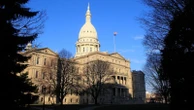After months of uncertainty, some federal student loan borrowers will soon have their debt canceled. But there’s a hook: You must be enrolled in a very specific program and have made sufficient payments to qualify.
Some borrowers have been receiving notices in recent weeks that read: “You are now eligible to have some or all of your federal student loan(s) discharged because you have reached the necessary number of payments under your Income-Based Repayment (IBR) Plan.”
The IBR plan, first introduced in 2007, offers debt cancellation after 20 or 25 years of repayment, depending on the age of the loans. Nearly 2 million borrowers were enrolled in this program as of the second quarter, according to Federal Student Aid figures.
Notices emailed to borrowers go on to inform them that the U.S. Department of Education will work with their loan servicer to process the discharge over the next several months. If for some reason borrowers want to opt out of IBR forgiveness, they must contact their loan servicer by Oct. 21.
While advocates for debt relief may cheer the news, these notices indicate that IBR forgiveness has resumed after about three months. In July, the Federal Student Aid quietly announced that forgiveness had been paused so its systems could be updated to accurately the number of months paid, blaming litigation related to a forgiveness plan instituted during former President Joe Biden’s administration.
As a result, the debt forgiveness notices are simply the resumption of the IBR program, rather than a new forgiveness plan. On the campaign trail last year, President Donald Trump called student loan forgiveness “vile” and “not even legal.” Education Secretary Linda McMahon has vowed that a mass forgiveness program won’t happen during her tenure.
These notices have gone out even amid the ongoing federal government shutdown. The Department of Education did not respond to a request for comment from Fast Company.
While a formal notice is the best way to confirm that your federal student loan debt will be cancelled, here’s how to know if you may qualify.
BORROWERS MUST BE ENROLLED IN IBR PLAN
The forgiveness notices sent out in recent weeks are only going to student loan borrowers who are enrolled in the income-based repayment plan, which capped monthly payments at a certain percentage of borrowers’ discretionary income .
Borrowers enrolled in other repayment plans, even other income-driven repayment plans, may not see relief soon—if ever. That’s because other plans have been phased out or are held up by litigation in courts.
CHECK NUMBER OF LOAN PAYMENTS
Only those borrowers enrolled in an IBR plan who have made a sufficient number of loan payments are eligible for forgiveness.
If you took out your federal student loans before July 1, 2014, then you must have made consistent monthly payments—300 in total—for 25 years. If you took out loans after that date, the threshold drops to 240 payments over a 20-year period.
Many borrowers switch repayment plans over time—and you may still be eligible for IBR forgiveness for payments made while you were enrolled under other plans.
It may be tempting to assume you’ve qualified for debt forgiveness based on your records of payments, but you should continue making payments as normal until you receive official notice.
EXPECT MORE SHOWDOWNS ON STUDENT LOANS
As the notices to borrowers indicate, full forgiveness may take several months. What’s more, the government shutdown may further delay loan forgiveness—and it has snarled other forgiveness efforts, including a legal challenge brought by the American Federation of Teachers regarding the Department of Education’s denial of rights to federal student loan borrowers for forgiveness opportunities that were mandated in their loan terms.
Finally, expect more showdowns related to federal student loan debt to come.
Last week, Politico reported that the Trump administration is considering selling parts of the federal government’s $1.6 trillion student loan portfolio to private investors. Such a move might change current repayment safeguards, along with the potential for loan forgiveness in the future.









No comments